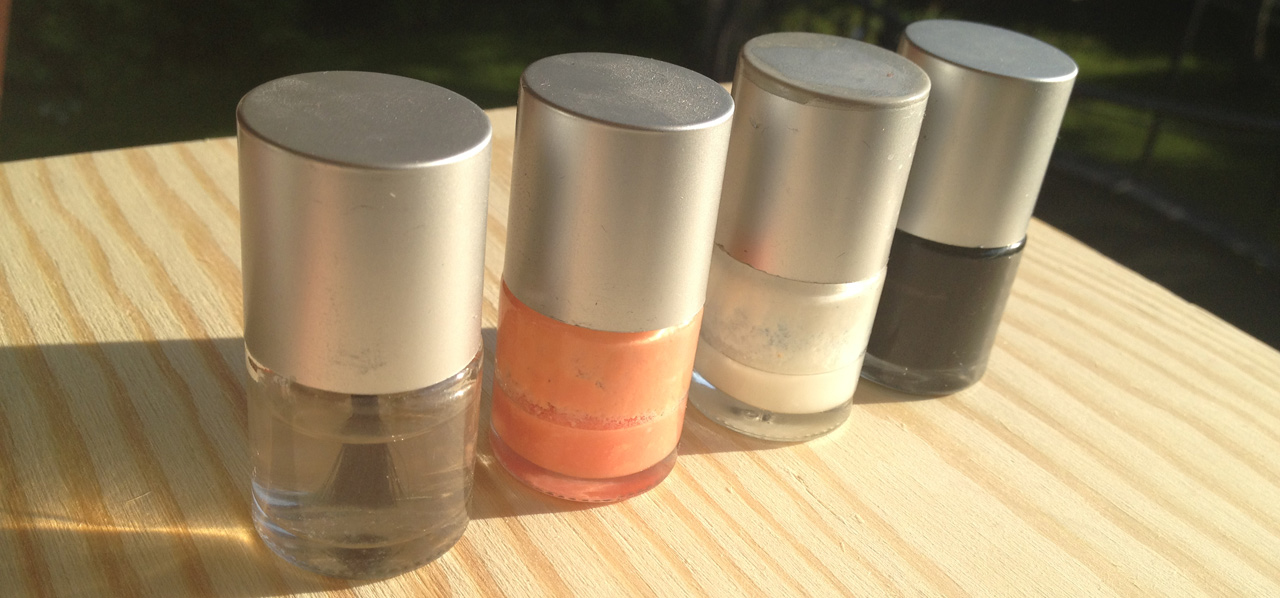3D printing trick: ABS sludge
08 July 2013 at 5:30 pm

One of the most common problems when 3D printing objects, is to make the print stick to the build platform. As the plastic cools, it shrinks a little bit and this makes the corners of large objects pop loose. There's many tricks to solve this, but none as simple as using ABS sludge.
UPDATE: I no longer use ABS sludge. Glue stick on a glass plate is way better and easier. It's the same as using PVA glue dissolved in water, but less messy. Glue sticks come in different strengths and you will easily wash them off the glass with a damp cloth.
Making ABS sludge
One of the most common misconceptions is that using a heated build platform prevents this curling. For PLA it's pretty much true since PLA hardly shrinks when cooled. For ABS, it is very much a problem even if you have a heated bed and it's very easy to remedy. All you need is a dab of ABS sludge in the corners where the print would come loose from the Kapton or Pet tape. The end result is that the print sticks really well and it is thus much harder to remove it from the platform after printing it.
So how do you do you make this magic goo? To make the sludge, you need three things:
- Glass container (a nail polish bottle is convenient)
- Acetone
- ABS in a color that is fairly similar to what you want to print.
Fill the bottle three quarters full of Acetone and then cut small pieces of ABS plastic that you add to the bottle. Shake well, leave it for an hour and then shake again. Repeat until the ABS is fully dissolved. That's all you need to do. I've experimented with various densities and it does not need to be a "thick" sludge to provide the required stickiness.
Now you can start printing and while it prints, you paint the corners of the object. If you don't have a stationary build platform like the Ultimaker has, just print a model with a "skirt", stop the print just as it starts to print the model and then use the skirt as a guide for where to put the sludge. I often let the first perimeter print and then apply sludge to the corners, before the fill is printed. This gives a super-strong foundation. You'll need to experiment, but be careful to not use too much sludge as it'll be next to impossible to remove the printed object. I try to use as little sludge as possible, but some prints require that you use quite a bit, so you'll need to experiment.
I haven't seen this published online, but maybe it's because it is so easy to do once you know it? It's by far the best trick I've learned since I started with 3D printing two years ago. It is also the same trick used by some of the larger 3D printer manufacturers. They call it something fancy (like Magic Glue), but it's usually just transparent ABS dissolved in acetone. The only drawback that I can think of is that colored sludge that is deposited outside of the model's area will remain there. Over time, your build platform will look somewhat messy unless you change the kapton tape.
Other solutions to make prints stick
I have not tried this myself as I find it messy, but many RepRap'ers say that Hairspray will have a similar effect on a heated bed. I'm a little unsure about what happens if you use too much and the bed temperature reaches 100 degrees+ but the flammable bits will probably fume out long before those temperatures. It is however certain that your entire printer will become somewhat sticky over time unless you take the build platform off every time you spray it.
Another trick is to do the first 1-2 layers on a much higher temp (100-110) and then reduce the temp for subsequent layers (70-80 degrees) to prevent the model from "sagging" from the heat. If your prints come loose, many will tell you to use Acetone to clean off the build platform. This works for blue-tape, but if you have a bed that is coated with Kapton- or Pet-tape, don't do that. Plain old soap and water will dissolve any oil-like substances (like finger prints) much better than Acetone.
That said - with ABS sludge, you can even stick down parts that come loose mid-print or support/parts that break, so it's still the best solution I know of.